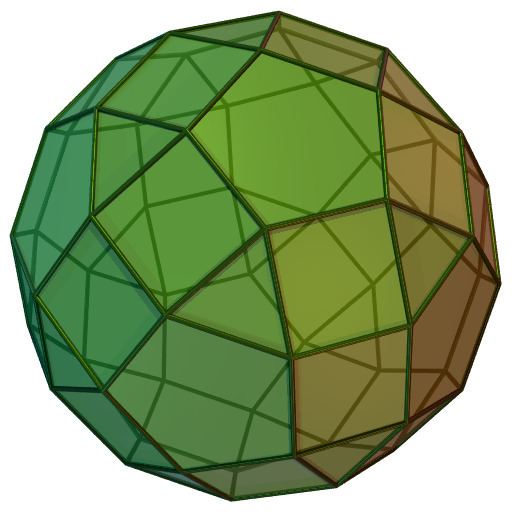Edges 120 Symmetry group D5d | Vertices 60 | |
 | ||
Type JohnsonJ72 - J73 - J74 Vertex configuration 20(3.4.5)2x10+20(3.4.5.4) | ||
In geometry, the parabigyrate rhombicosidodecahedron is one of the Johnson solids (J73). It can be constructed as a rhombicosidodecahedron with two opposing pentagonal cupolae rotated through 36 degrees.
A Johnson solid is one of 92 strictly convex polyhedra that have regular faces but are not uniform (that is, they are not Platonic solids, Archimedean solids, prisms or antiprisms). They were named by Norman Johnson, who first listed these polyhedra in 1966.
Alternative Johnson solids, constructed by rotating different cupolae of a rhombicosidodecahedron, are: the gyrate rhombicosidodecahedron (J72) where only one cupola is rotated, the metabigyrate rhombicosidodecahedron (J74) where two non-opposing cupolae are rotated and the trigyrate rhombicosidodecahedron (J75) where three cupolae are rotated.
